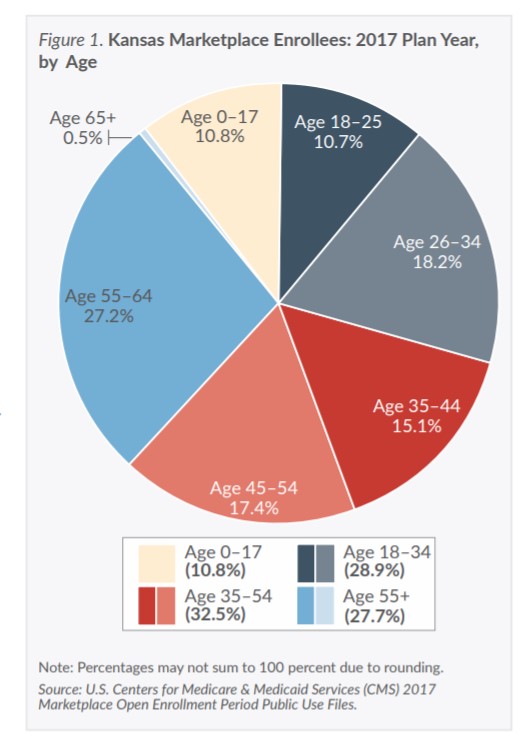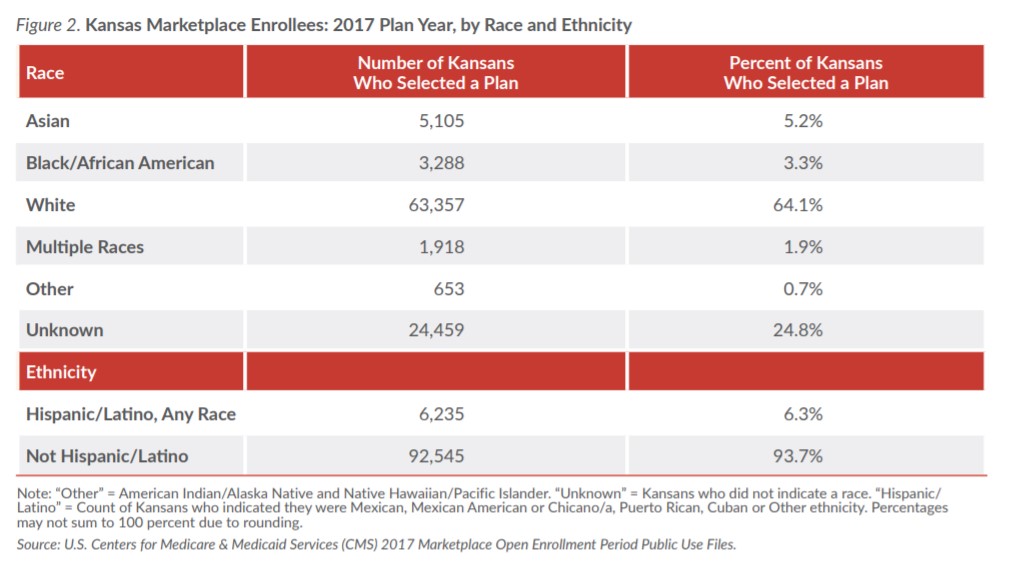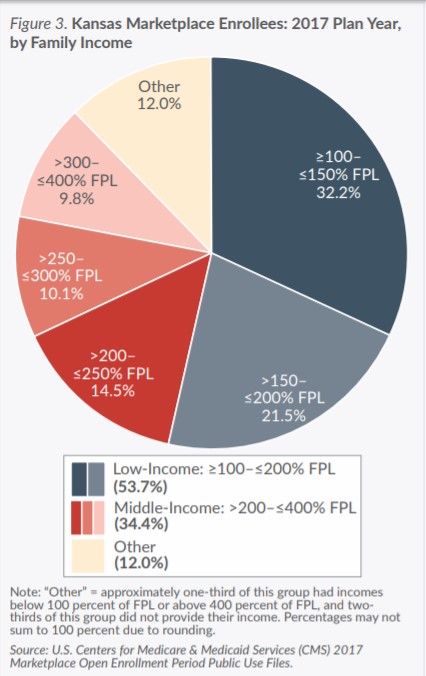Introduction
The fifth annual open enrollment period for Healthcare.gov, the health insurance marketplace created by the Affordable Care Act (ACA), will begin on November 1 and end on December 15, 2017. This 45-day open enrollment period—half as long as the open enrollment periods for the last three years— will be the only enrollment opportunity for consumers who wish to purchase individual health insurance coverage for 2018 through the federally facilitated Kansas marketplace. Individuals who qualify for a special enrollment period after December 15 due to a “life event” (e.g., loss of previous coverage or change in family status) must enroll within 60 days from the date of the qualifying event.
This brief looks back at the results of the open enrollment period for plan year 2017, during which 98,780 Kansans—and 12.2 million consumers nationwide—selected or were automatically re-enrolled in a marketplace plan.
Enrollee Characteristics
Data from the U.S. Department of Health and Human Services (HHS) show that 132,262 For 2017 Kansans shopped for a marketplace plan for 2017 and were determined eligible to enroll, but only 98,780 Kansans completed their enrollment and selected a plan or were automatically re-enrolled. HHS reported that 87.4 percent (86,310) of these enrollees “effectuated” their enrollment by paying premiums by March 15, 2017. HHS does not provide detailed data on those with effectuated enrollment, so this analysis is based on the set of 98,780 Kansans who were enrolled for 2017.
Age
More than one in four (28.9 percent or 28,557) Kansas enrollees were age 18–34 (Figure 1), slightly higher than the national proportion of 27.1 percent for this age group for 2017. This age demographic is often noted as important because younger adults are generally healthier and their premiums help support the cost of older enrollees.





